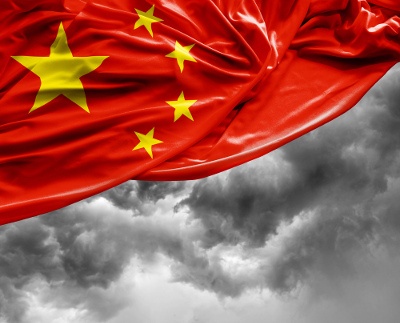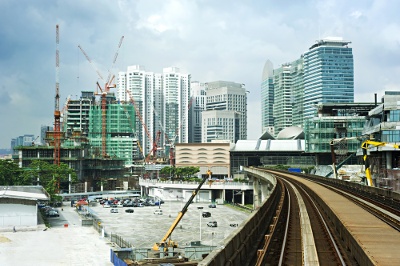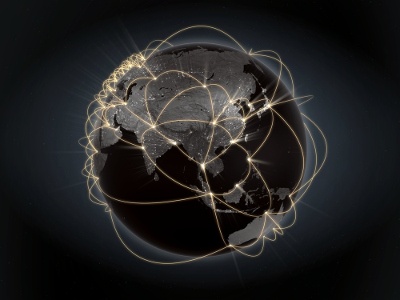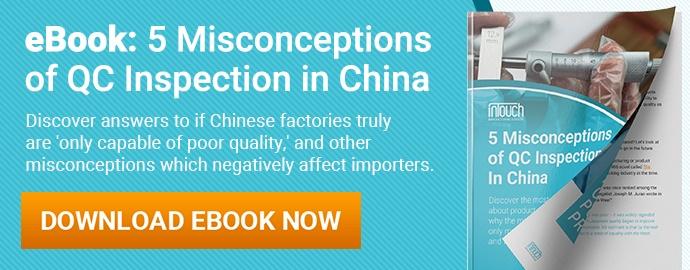Each Sunday, we publish a list of top articles and other content related to manufacturing in areas like quality control, product development, supply chain management, sourcing, auditing and law.
1. The fear surrounding Made in China 2025
In case you haven’t heard about it, Made in China 2025 is a significant government effort to modernize the country’s industry by 2025. The plan aspires to beef up Chinese manufacturing and foster innovation, among other areas. But there are some who worry about how the government plans to make the plan a reality.
But there are some who worry about how the government plans to make the plan a reality.
Imagine if someone in your neighborhood had a secret recipe for making cake that everyone loved. In order for them to sell it in a nearby suburb, though, they’d have to tell a competitor there how to bake it. This is essentially what’s happening in China: in order for a growing number of foreign firms to access the Chinese market, they must share advanced and proprietary technology. It seems that in China, not all overseas companies get to have their cake and eat it, too.
In the case of a normal joint venture or acquisition between two companies from market economies, this exchange might not be so bad. But as a result of Made in China 2025, there’s a chance that the government is helping fund acquisitions of foreign competitors and technology. Undoubtedly, with a state actor involved, this massive subsidization could disrupt business around the world and harm dozens of economies.
And when it comes to acquisitions of new tech, Joerg Wuttke, the president of the European Chamber of Commerce in China, has this to say,
They [government leaders] do this with the tool box out of the socialist backyard, meaning that they want to steer the companies, they want to subsidize the companies. We think that China would be better served if they leave this to private Chinese enterprises to drive this forward.
It’s hard to find fault with the Chinese government’s motives. Officials are merely trying to keep China moving up the value chain. But their methods are somewhat controversial and could prompt backlash from foreign companies.
What’s your take on Made in China 2025? Do you think it’s an opportunity for everyone or a threat to global competition? Let us know in the comments section below.
If you’d like to read the full article that covers this topic, check it out by following the link below:
China's Industry Plan Hit by Fears of Wrongful Investments, Tech Thefts – Saibal Dasgupta, Voice of America News
2. The two faces of the weak currency coin
At the time of this writing, the renminbi (RMB), China’s currency, is trading at 1 USD: 6.91 RMB, 1 Euro: 7.29 RMB and 1 British Pound: 8.41 RMB. China could influence these drastic imbalances if it wanted to. So why keep them?
In the realm of exporting, foreign companies will typically buy more goods when a country’s currency is cheaper than that of its home country. A weaker currency means more exports. But there are some downsides to keeping a currency relatively cheap. Buyers’ expectations are influenced to the point where they might plan their purchasing for a time when goods are even more affordable, based on currency projections.
This poses a big problem for manufacturers. And in the case of Li Xinghao, founder and chairman of the Guangdong Chigo Air Conditioning Company, clients are well aware of the differences a weaker currency make. Based on the RMB’s current trajectory, Li already has customers saying, “The renminbi will reach 7.1 [to USD]. Please reduce your prices.”
For importers, a weaker RMB is typically a good thing. The advantage loses its effect, however, if the factory you’re working with goes out of business. There are plenty of factories in China. But time is money. And switching from one to another can potentially set you back and make you miss a window of opportunity.
If you’d like to learn more about how a weaker currency affects Chinese factories, check out the article in the link below:
For China’s Factories, a Weaker Currency Is a Double-Edged Sword – Keith Bradsher, The New York Times
3. The Asian Development Bank’s plan for more infrastructure in Asia
The Asian Development Bank (ADB) is definitely aware of infrastructure’s importance. Aside from its plans to boost annual approvals and grants for infrastructure to $20 billion by 2020, the ADB predicts that “Asia needs at least $1.5 trillion of road, bridges and other infrastructure annually between now and 2030 to maintain its growth momentum.”
 It almost goes without saying that that’s a lot of money. China, by comparison, spent around $2.2 trillion on infrastructure in 2016, which includes developments like its bullet train network. But China is a much larger country than any recipients of ADB funds.
It almost goes without saying that that’s a lot of money. China, by comparison, spent around $2.2 trillion on infrastructure in 2016, which includes developments like its bullet train network. But China is a much larger country than any recipients of ADB funds.
The additional annual $1.5 trillion expenditure would hopefully cover a lot of ground to help with economic output, climate change and reductions in poverty. It would be used to improve:
- The power sector
- Transportation
- Telecommunications
- Water and sanitation
Improvements in these areas, if realized, could mean more efficient logistics in the region, leading to lower costs for importers. And if living standards rise in the countries that receive ADB money, that could also make them more attractive to importers willing to manufacture and sell in the same country. But all this is only possible if ADB money flows into the hands of the right people.
To learn more about the ADB and its plans for infrastructure, check out the full article in the link below:
Building Binge: ADB Calls for More Infrastructure across Asia – Mark Magnier, The Wall Street Journal
4. Considering two sides of price discrimination in trade
Price discrimination takes a few different forms. One such form is dumping goods. When one company dumps goods in a foreign economy, it’s usually met with retaliatory tariffs. The tariffs are meant to level the playing field for domestic firms that can’t compete with the foreign, underpriced goods. Yet this trade measure has repercussions.
The article mentions the case of U.S. metal industries as an example. 58 percent of anti-dumping duties are awarded to companies dealing with resources like iron, steel and more. When this trade measure goes into effect, however, it has a ripple effect throughout relevant supply chains. The many manufacturers that rely on those inputs have to pay a higher price.
In the words of the author,
The anti-dumping duties means they [U.S. manufacturers] have to pay more for those materials than what their competitors are paying on the world market, which puts them at a disadvantage.
For some industries, anti-dumping duties favoring another industry might make them less competitive in the global economy. For others, they’re a necessary means to protect against unfair, usually highly subsidized competition (prime example: China’s steel industry). No matter what side you take, though, one thing is certain: as with many other aspects of economics, nothing is as simple as it seems.
To learn more about price discrimination in global trade, check out the full article in the link below:
Both Sides of the Manufacturing Equation – Christine McDaniel, Global Trade Magazine
5. Asia’s continued support of globalization
Globalization has seen better days. In Europe and the United States, there’s been considerable push back against it. The results of both Donald Trump’s presidential victory and Brexit have included countermeasures to globalization.
 Some countries are drawing inward, proposing tariffs and other protectionist policies. Others are removing trade barriers, eager to continue integrating into the global economy. All hope is not lost for globalization. Many nations in Asia still fight for globalization and see it as a powerful tool to improve their living standards and economies.
Some countries are drawing inward, proposing tariffs and other protectionist policies. Others are removing trade barriers, eager to continue integrating into the global economy. All hope is not lost for globalization. Many nations in Asia still fight for globalization and see it as a powerful tool to improve their living standards and economies.
In Asia, the Association of South Eastern Asian Nations (AESAN) and the Regional Comprehensive Economic Partnership (RCEP) are two prime instances of governments cooperating for stronger trade ties and interconnectedness.
The TPP, for example, used to loom over the RCEP. But President Trump signaled his unwillingness to continue with the massive trade deal, which gives RCEP and its Asian backers a chance to champion their own vision of globalization. The RCEP,
…seeks to balance the interests of its diverse participants, rather than impose key common principles and rules in advance. Asia’s message is clear: if you want a workable mega-FTA, be pragmatic.
And a major advantage of the RCEP over the TPP for Asia is that it includes both China and India. Connecting two major, rapidly advancing economies with other countries in their proximity will serve globalization well. Just how well, though? We’ll have to wait and see.
If you’d like to learn more about globalization and Asia, check out the full article in the link below:
Globalisation’s Not Dead, It Just Has a New Powerhouse – Asia – Ivan Tselichtchev, South China Morning Post
We’re constantly scanning the web for top manufacturing stories and news. If you’d like to submit an article for consideration for our weekly Best in Manufacturing, send us a message and let us know.







